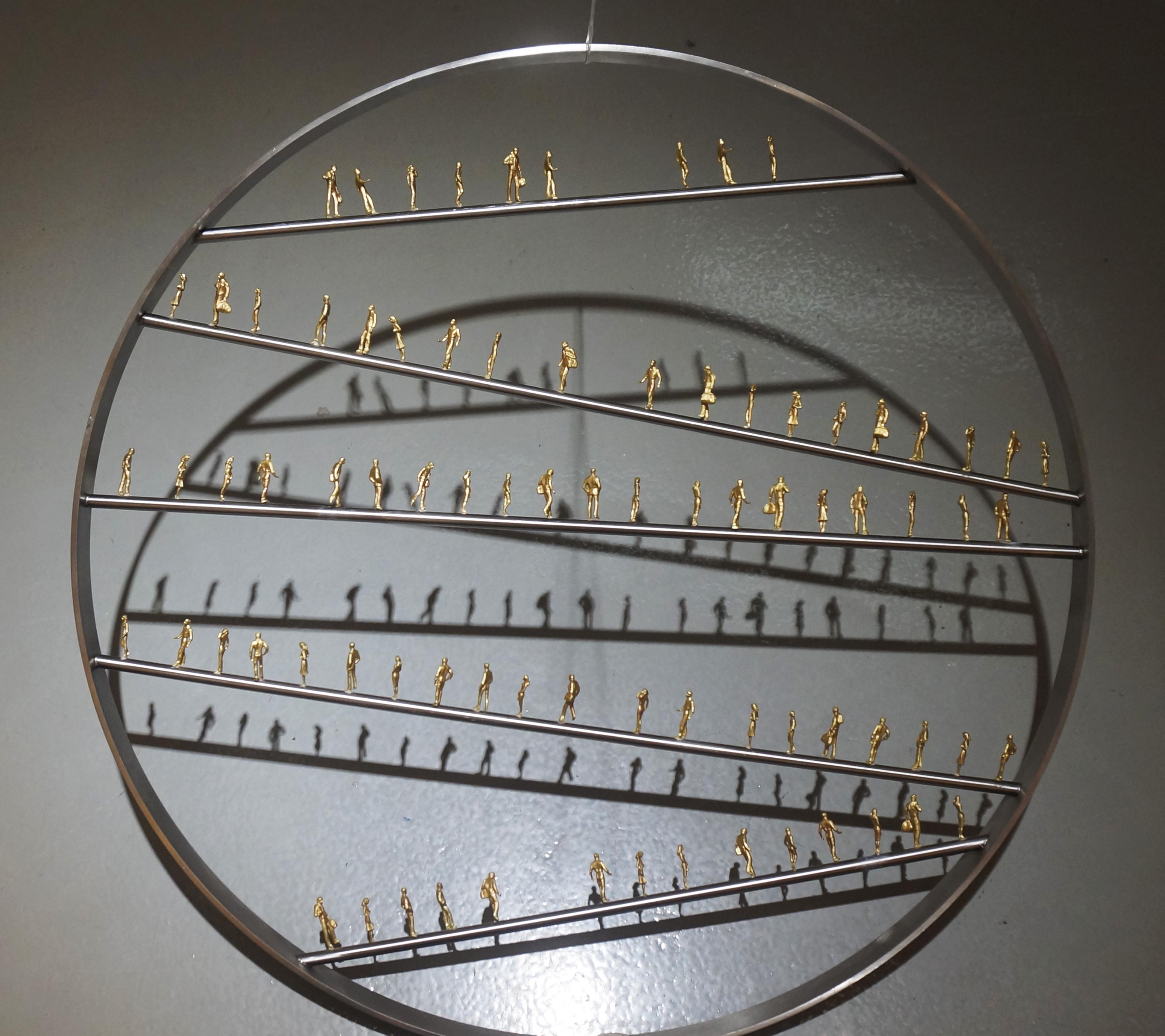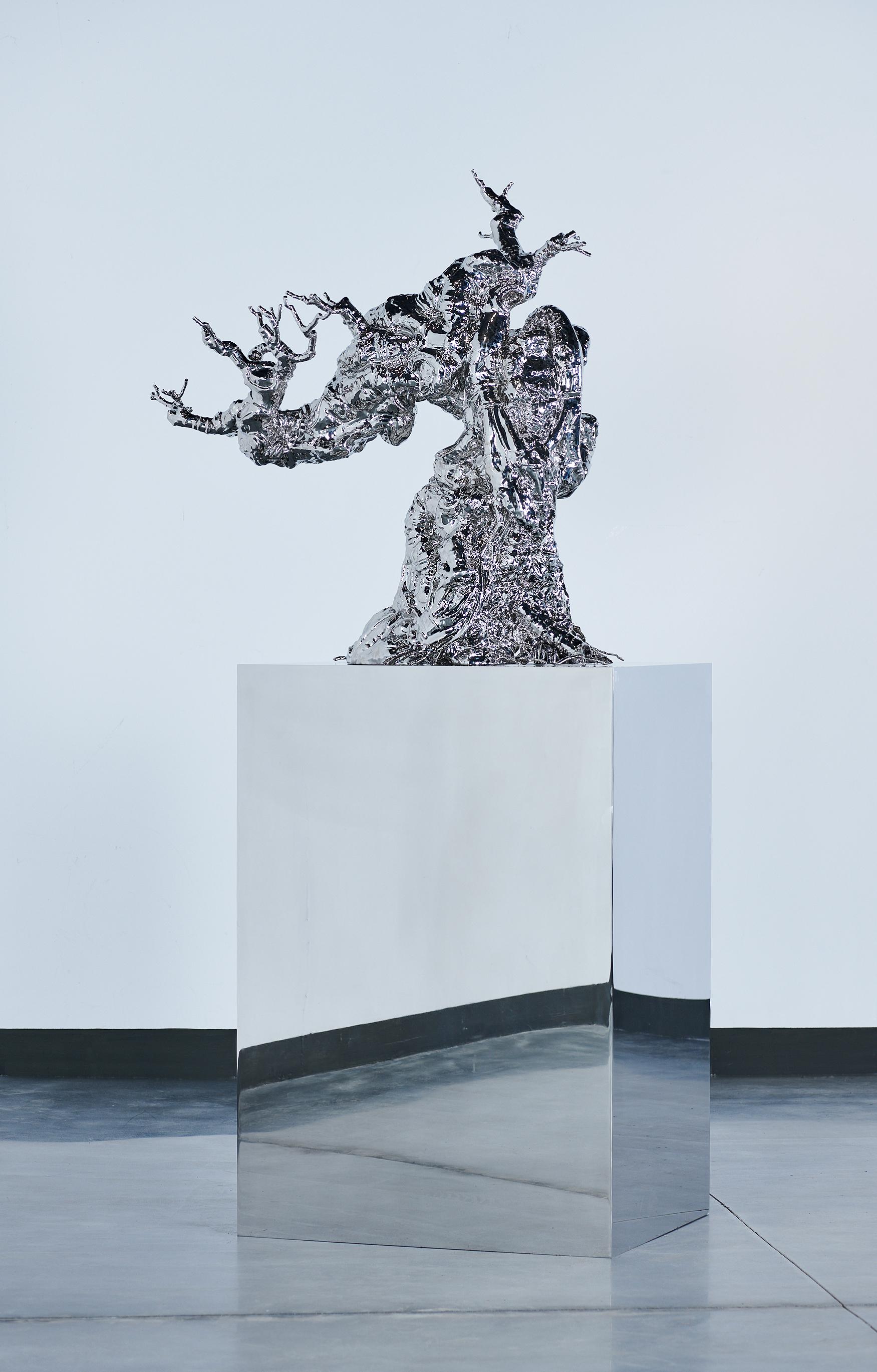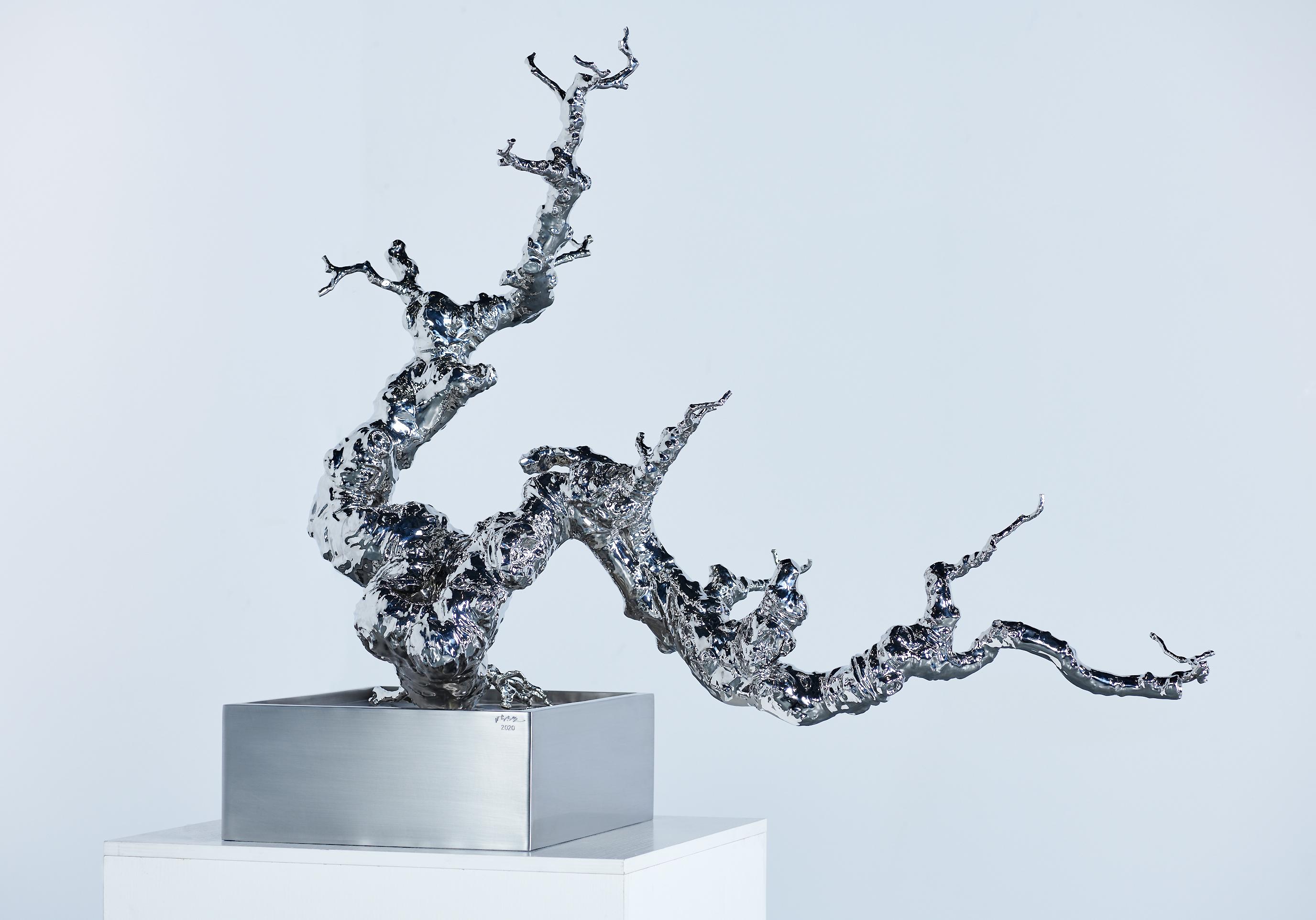Items Similar to Flowing Man
Want more images or videos?
Request additional images or videos from the seller
1 of 2
Ernest TrovaFlowing Man1972
1972
About the Item
Edition 37/99
- Creator:Ernest Trova (1927 - 2009, American)
- Creation Year:1972
- Dimensions:Height: 6.75 in (17.15 cm)Width: 19.5 in (49.53 cm)Depth: 3.5 in (8.89 cm)
- Medium:
- Movement & Style:
- Period:
- Condition:
- Gallery Location:Boca Raton, FL
- Reference Number:1stDibs: LU135426106942
About the Seller
5.0
Recognized Seller
These prestigious sellers are industry leaders and represent the highest echelon for item quality and design.
Established in 1989
1stDibs seller since 2020
20 sales on 1stDibs
Typical response time: 2 hours
- ShippingRetrieving quote...Ships From: Boca Raton, FL
- Return PolicyA return for this item may be initiated within 3 days of delivery.
More From This SellerView All
- Double FlapmanBy Ernest TrovaLocated in Boca Raton, FLAP 2 Ernest Trova was an artist whose signature creation, a gleaming humanoid known as “Falling Man,” appeared in a series of sculptures and paintings and became a symbol of an imperfect humanity hurtling into the future. Mr. Trova was largely known as a sculptor, but his “Falling Man,” a standard of Pop Art, began life as a painted figure, taking shape on his easel in the early 1960s. Faceless, armless, with a hint of a belly and, its name notwithstanding, of indeterminate sex, the figure struck a variety of poses, sometimes juxtaposed with other like figures, sometimes with mechanical appendages. In October 1963 his one-man show, “Falling Man Paintings,” was the inaugural exhibition of the Pace Gallery on West 57th Street in Manhattan; it sold out, with the works purchased by the Museum of Modern Art, the Whitney Museum, the architect Philip Johnson and others. In three dimensions, the “Falling Man” figure was made from different materials over the years — nickel and chrome-plated bronze, enamel on aluminum, stainless steel — and often, like the Oscar statuette, was polished to an industrial sheen. It was clearly a space age creation, a forerunner of C3PO, the golden robot in “Star Wars.” “He found the space age both inspiring and dehumanizing,” Arne Glimcher, who founded the Pace Gallery, now PaceWildenstein, said in an interview on Friday. By the end of the 1960s, “Falling Man” had become Mr. Trova’s trademark, provoking Hilton Kramer, the art critic of The New York Times, to write that Mr. Trova had subjected his favorite figure “to almost as many variations as the Kama Sutra describes for the act of love.” Ernest Tino Trova Jr. was born in St. Louis on Feb. 19, 1927. Shortly after his high school graduation his father, an industrial tool designer and inventor, died, and young Ernie, as he was known, went to work, most significantly as a window dresser for a department store. His early paintings were in the Abstract Expressionist mode, but his attentiveness to the mannequins had an influence on his art. Through the 1970s and 1980s he continued with “Falling Man,” though he also became interested in formalized, almost mechanical-seeming landscapes, and the figures began to appear, reduced in size, within the context of abstractly rendered gardens. A self-taught artist with an impish wit and an eccentric turn of mind, Mr. Trova craved the recognition that was available to artists only in New York City, but he never visited for more than a week at a time and made almost no friends among New York artists. He did befriend Ezra Pound. As a fevered fan of Julio Iglesias...Category
20th Century Contemporary Figurative Sculptures
MaterialsStainless Steel
- Double Walking FigureBy Ernest TrovaLocated in Boca Raton, FLrnest Trova was an artist whose signature creation, a gleaming humanoid known as “Falling Man,” appeared in a series of sculptures and paintings and became a symbol of an imperfect humanity hurtling into the future. Mr. Trova was largely known as a sculptor, but his “Falling Man,” a standard of Pop Art, began life as a painted figure, taking shape on his easel in the early 1960s. Faceless, armless, with a hint of a belly and, its name notwithstanding, of indeterminate sex, the figure struck a variety of poses, sometimes juxtaposed with other like figures, sometimes with mechanical appendages. In October 1963 his one-man show, “Falling Man Paintings,” was the inaugural exhibition of the Pace Gallery on West 57th Street in Manhattan; it sold out, with the works purchased by the Museum of Modern Art, the Whitney Museum, the architect Philip Johnson and others. In three dimensions, the “Falling Man” figure was made from different materials over the years — nickel and chrome-plated bronze, enamel on aluminum, stainless steel — and often, like the Oscar statuette, was polished to an industrial sheen. It was clearly a space age creation, a forerunner of C3PO, the golden robot in “Star Wars.” “He found the space age both inspiring and dehumanizing,” Arne Glimcher, who founded the Pace Gallery, now PaceWildenstein, said in an interview on Friday. By the end of the 1960s, “Falling Man” had become Mr. Trova’s trademark, provoking Hilton Kramer, the art critic of The New York Times, to write that Mr. Trova had subjected his favorite figure “to almost as many variations as the Kama Sutra describes for the act of love.” Ernest Tino Trova Jr. was born in St. Louis on Feb. 19, 1927. Shortly after his high school graduation his father, an industrial tool designer and inventor, died, and young Ernie, as he was known, went to work, most significantly as a window dresser for a department store. His early paintings were in the Abstract Expressionist mode, but his attentiveness to the mannequins had an influence on his art. Through the 1970s and 1980s he continued with “Falling Man,” though he also became interested in formalized, almost mechanical-seeming landscapes, and the figures began to appear, reduced in size, within the context of abstractly rendered gardens. A self-taught artist with an impish wit and an eccentric turn of mind, Mr. Trova craved the recognition that was available to artists only in New York City, but he never visited for more than a week at a time and made almost no friends among New York artists. He did befriend Ezra Pound. As a fevered fan of Julio Iglesias, he went to the singer’s concerts all over the United States. “Ernie had a fabulous fantasy life,” Richard Solomon, the president of Pace Prints, the publishing arm of PaceWildenstein, said in an interview. “He had a persona he used to hide behind that he called ‘Junior Person.’ He was a wonderful man, but an oddball to beat the band.” Mr. Trova left the Pace Gallery in the mid-1980s and signed with an inexperienced dealer in St. Louis. His profile went into decline, except in his hometown, where his donation of many of his works helped create the Laumeier Sculpture Park. He continued to work until shortly before his death. Most recently he was making collages using magazine...Category
20th Century Figurative Sculptures
MaterialsStainless Steel
- Haza'elBy Boaz VaadiaLocated in Boca Raton, FLVaadia says of his work, “By using the natural forces of rocks, my work awakens ancient ‘earth senses’ that were slowly abandoned by man during his evolution to civilization. By carv...Category
21st Century and Contemporary Contemporary Figurative Sculptures
MaterialsBluestone, Bronze
- Rad Lad IIBy Lynn ChadwickLocated in Boca Raton, FLEdition 3/4 Lynn Chadwick was part of a generation of British sculptors who surprised audiences at the 1952 Venice Biennale by breaking with the tradition of carving sculpture from ...Category
20th Century Contemporary Figurative Sculptures
MaterialsBronze
- Running HorseBy Wendy KlempererLocated in Boca Raton, FLThe imagery that pervades my work reflects a lifelong fascination with animals. As a child this led to hours of watching, drawing, and imagining. When I began making sculpture as an ...Category
21st Century and Contemporary Contemporary Figurative Sculptures
MaterialsSteel
- UzziyyaBy Boaz VaadiaLocated in Boca Raton, FLThis sculpture is edition 2/7, cast posthumously by the Boaz Vaadia Estate.Category
21st Century and Contemporary Contemporary Figurative Sculptures
MaterialsBluestone, Bronze
You May Also Like
- FRANKIE SAYS RELAX SERIESLocated in Istanbul, 34FRANKIE SAYS RELAX series. (Frankie Goes to Hollywood is a very popular British band popular. The group's 1983 debut single Relax was banned by the BBC in 1984 while at number six in the charts and subsequently topped the UK Singles Chart for five consecutive weeks, going on to enjoy prolonged chart success throughout that year and ultimately becoming the seventh best selling UK single of all time. ) According to the artist; The idleness save the world, everything will begin one day by not going to work. In ancient Athena, working was attributed only to the slaves. As for today, the monopolies who direct world politics and economy, do not eschew from provoking war for their own interests, and make people ill and then dooms to medicine have created their own modern slaves of consumption with their so-called aims of development, growth and welfare society. Gonul Nuhoglu...Category
2010s Contemporary Abstract Sculptures
MaterialsBrass, Stainless Steel
- Contemporary Stainless Steel Sculpture-Unique work - Tree is not Wood #1Located in Beijing, CNStainless Steel Sculpture by Chen Zhiguang Title: Tree is not Wood #1 Material: Stainless Steel Dimension: 218 x 118 x 70 cm Date: 2021 About the artwork: Bonsai (Potted landscap...Category
2010s Contemporary Figurative Sculptures
MaterialsStainless Steel
- Contemporary Stainless Steel Sculpture-Unique work - Tree is not Wood #2Located in Beijing, CNStainless Steel Sculpture by Chen Zhiguang Title: Tree is not Wood #2 Material: Stainless Steel Dimension: 92 x 104 x 48 cm Date: 2021 About the artwork: Bonsai (Potted landscape)...Category
2010s Contemporary Figurative Sculptures
MaterialsStainless Steel
- Anabasis Murmur, Steel contemporary bird sculpture in steelBy Jake Michael SingerLocated in Johannesburg, ZAJake Michael Singer works across different mediums, including sculpture, photography, drawing and painting. His art focuses primarily on materiality, myth, and catharsis. Singer ca...Category
2010s Contemporary Figurative Sculptures
MaterialsStainless Steel
- Heart Murmur, Steel contemporary bird sculpture in red resembling a heartBy Jake Michael SingerLocated in Johannesburg, ZAJake Michael Singer works across different mediums, including sculpture, photography, drawing and painting. His art focuses primarily on materiality, myth, and catharsis. Singer ca...Category
2010s Contemporary Figurative Sculptures
MaterialsStainless Steel
- Indigo Murmur, Steel contemporary bird sculpture in purpleBy Jake Michael SingerLocated in Johannesburg, ZAJake Michael Singer works across different mediums, including sculpture, photography, drawing and painting. His art focuses primarily on materiality, myth, and catharsis. Singer ca...Category
2010s Contemporary Figurative Sculptures
MaterialsStainless Steel
Recently Viewed
View AllMore Ways To Browse
Flowing Man
Magenta Balloon Dog
Japanese Haniwa Figures
Salvador Dali Saint John
Abstract Opal Painting
Henry Moore Maquette
Picasso Chouette
Used Furniture Van Nuys
Picasso Poisson
Frey Pottery
Nichola Theakston
Dior 2020 Dress
Boots African
Haude Bernabe
Golf Art Pebble Beach
Glenna Goodacre
Martin Duque
Ap Full Gold




